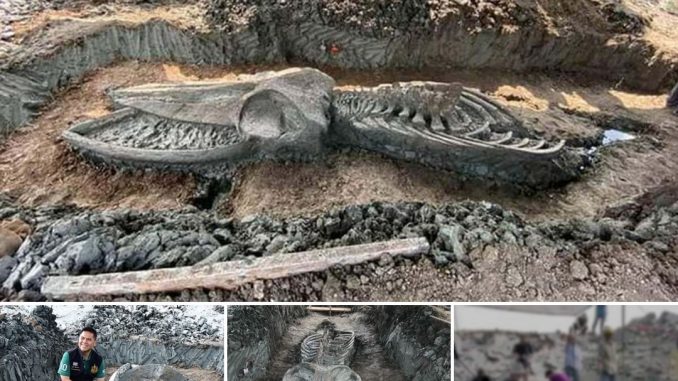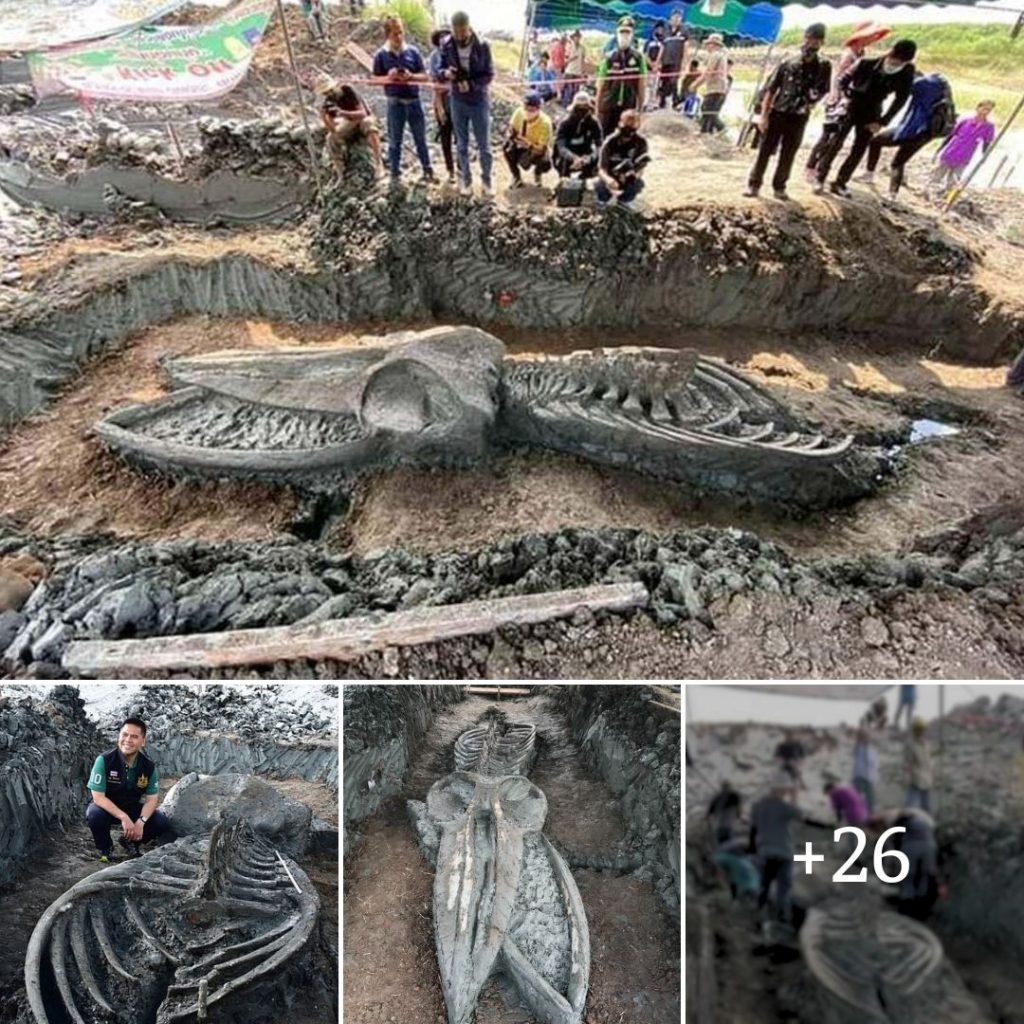
In the realm of archaeological discoveries, few things captivate the imagination quite like the unearthing of ancient creatures from the depths of time. Recently, in the verdant jungles of Thailand, researchers made a truly remarkable find—a 39-foot-long, 5,000-year-old monster of a creature, astonishingly well-preserved to the surprise of everyone involved.
The discovery occurred during a routine excavation in the northeastern region of Thailand, where archaeologists were conducting surveys of prehistoric sites dating back to the Neolithic period. Amidst the lush foliage and tangled undergrowth, they stumbled upon the skeletal remains of a creature unlike anything seen before—a colossal beast with a body measuring nearly 40 feet in length.
Initial assessments suggested that the creature belonged to the genus Titanoboa, a prehistoric snake known to have inhabited the swamps and marshlands of South America during the Paleocene epoch. However, the presence of this ancient behemoth in Southeast Asia came as a shock to researchers, challenging existing theories about the distribution and evolution of prehistoric reptiles.
What truly set this discovery apart was the remarkable state of preservation in which the creature was found. Despite its age, the skeleton remained remarkably intact, with fossilized bones and even traces of soft tissue still visible to the naked eye. This level of preservation provided researchers with a rare opportunity to study the anatomy and physiology of this ancient predator in unprecedented detail.

But how did this ancient monster manage to remain so well-preserved for millennia? The answer lies in the unique environmental conditions of its burial site. The creature was found entombed in a layer of sediment rich in minerals and organic matter, which acted as a natural preservative, protecting the bones from decay and decomposition over thousands of years.
In addition to the mineral-rich sediment, the anaerobic conditions of the burial site further contributed to the creature’s remarkable preservation. The absence of oxygen in the surrounding environment slowed down the process of decay, allowing the skeleton to fossilize gradually over time.
The discovery of the 39-foot-long, 5,000-year-old monster in Thailand has sent shockwaves through the scientific community, prompting a reevaluation of our understanding of prehistoric ecosystems and the creatures that inhabited them. As researchers continue to study this remarkable find, they hope to unlock further insights into the evolution and behavior of ancient reptiles and the environments in which they lived.
In the meantime, the discovery serves as a powerful reminder of the mysteries that still lie buried beneath the earth’s surface, waiting to be unearthed and brought to light. As we marvel at the incredible preservation of this ancient monster, we are reminded of the vastness of geological time and the wonders that await discovery in the unexplored corners of our planet.
Leave a Reply